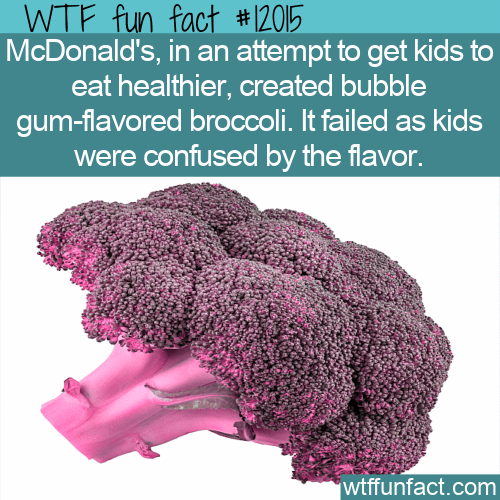Phosphorus is an essential element that plays a myriad of roles in biological and ecological systems. It is a key component of DNA and RNA, integral to cellular function and energy transfer. Yet, amid the proverbial buffet of nutrients that broccoli offers, phosphorus often fails to get its deserved limelight. This article will demystify the significance of phosphorus in broccoli, explore its health benefits, and discuss the broader implications for human nutrition.
Broccoli, a member of the Brassica family, is not just a culinary staple but also a nutritional powerhouse. It is lauded for its high vitamin C and K content, fiber, and various antioxidants. However, what is frequently overlooked is the rich phosphorus content inherent in this cruciferous vegetable. Phosphorus typically sits beneath the surface of more well-known nutrients, but that does not diminish its importance.
The average serving of broccoli contains approximately 66 milligrams of phosphorus. This amount may seem modest, but consider this: phosphorus is the second most abundant mineral in the human body, outstripped only by calcium. The importance of phosphorus cannot be understated; it assists in the formation of bones and teeth, supports energy metabolism, and plays a pivotal role in the growth and repair of tissues.
Why should we then pay special attention to phosphorus in our diets, particularly from sources like broccoli? First, let’s delve into its role in energy production. Phosphorus is crucial in the formation of adenosine triphosphate (ATP), which is often referred to as the “energy currency” of the cell. Without adequate phosphorus intake, ATP production may be compromised, potentially resulting in fatigue and muscle weakness. Thus, consuming broccoli not only offers you fiber but also fuels your cellular energy systems, promoting vitality and resilience.
Moreover, phosphorus serves as a fundamental building block for bones and teeth. It works closely with calcium to support structural integrity, playing an indispensable role in ensuring that our skeletal systems remain robust. Insufficient phosphorus can lead to bone-related issues such as osteomalacia—a weakening of the bones which can lead to fractures. Eating broccoli regularly can therefore be seen as a proactive measure in maintaining bone health, particularly for individuals at risk of osteoporosis.
Alongside bone health, phosphorus plays a vital role in kidney function. The kidneys filter blood, excreting waste and balancing electrolyte levels. Inadequate phosphorus levels can disrupt this delicate equilibrium, leading to complications such as renal insufficiency. This makes it imperative for individuals with compromised kidney function to monitor their phosphorus intake, not merely through high-calcium foods but also via wholesome sources like broccoli.
Ponder, if you will, the environmental implications of phosphorus. The element is not only pivotal in human health but also affects agricultural ecosystems. Phosphorus contributes to plant growth and is integral in fertilizers, ensuring that crops, including broccoli, flourish. Interestingly, the balance of phosphorus in the soil can have cascading effects on water quality and biodiversity. Excess phosphorus runoff can lead to eutrophication, a process that depletes oxygen in aquatic environments, endangering fish and other wildlife. This duality of phosphorus—as a nutrient necessary for life and a potential pollutant—encapsulates the complexity of nutrient management in agronomy.
Engaging with broccoli doesn’t end with its inherent nutritional benefits. Understanding how to best incorporate this vegetable into your diet is essential for maximizing phosphorus intake. Steaming broccoli rather than boiling it preserves more of its nutrients, including phosphorus. An accompanying drizzle of olive oil can enhance phosphorus bioavailability, further cementing the nutrient’s role in a balanced diet.
Furthermore, layering broccoli with other phosphorus-rich foods—such as sunflower seeds, quinoa, or legumes—could offer diverse, delectable meals. This not only boosts your phosphorus intake but also enriches your dietary palette, integrating varying textures and flavors. Think of a warm quinoa-broccoli salad topped with toasted sunflower seeds—all nutrients considered!
However, it is also essential to address the potential downsides of excessive phosphorus consumption. In a society that often overspills on processed foods, which may be laden with phosphates, there exists a risk of phosphorus toxicity. This condition can manifest as cardiovascular disease or compromised bone health. But fear not; consuming whole foods like broccoli remains a prudent choice that skirts this risk while delivering balanced nutrition.
If you find yourself particularly enamored by unusual combinations of ingredients, consider exploring broccoli in unexpected culinary forms. From broccoli smoothies to broccoli-integrated pastries, the versatility of this vegetable is boundless—invigorating your menu while simultaneously catering to your phosphorus needs. Experimentation in the kitchen can yield admiration from family and friends, not to mention the added health benefits.
In conclusion, phosphorus in broccoli represents more than just a nutrient; it is a multi-faceted player in the grand symphony of human health and environmental sustainability. As you reflect on your dietary choices, consider how an upsurge in broccoli consumption can not only bolster your nutritional intake but also align with a more holistic approach to well-being. The challenge is yours: Are you ready to embrace broccoli as your phosphorus ally? Your body—and plate—may very well thank you.

